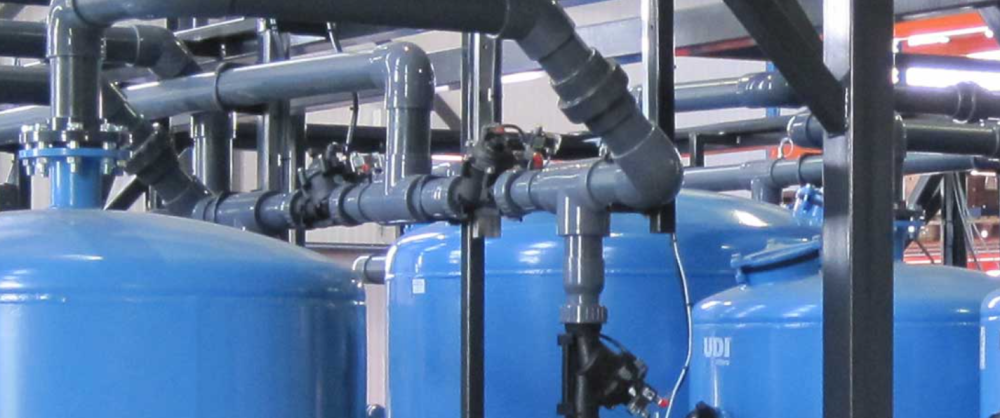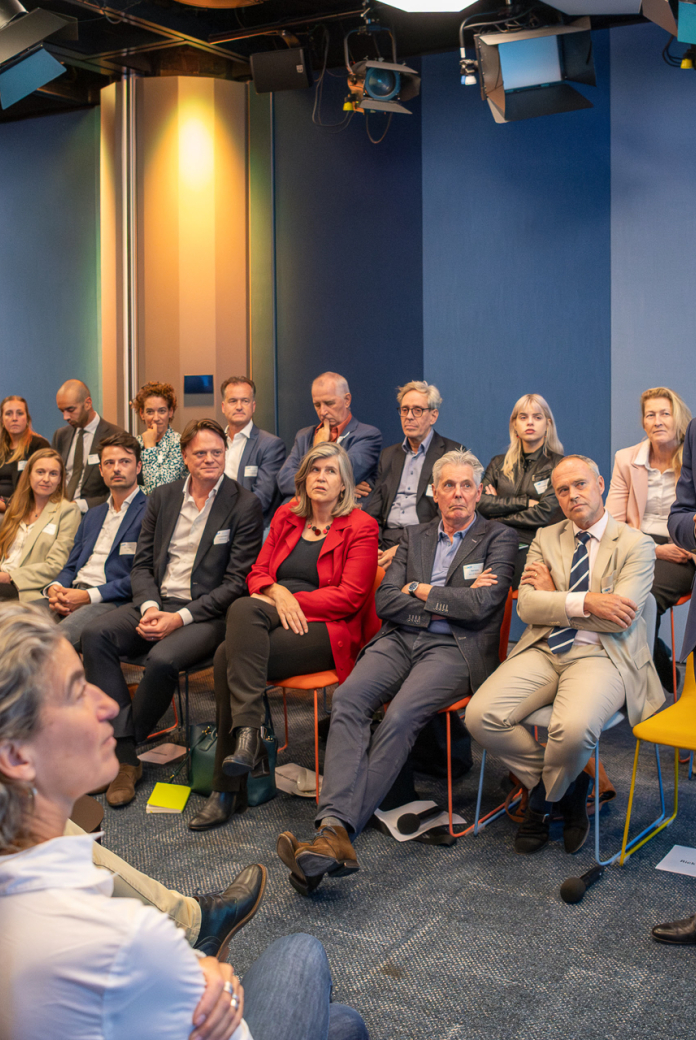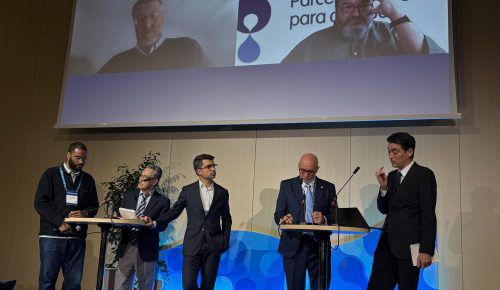News
9 September 2024TKI project: Practical demonstrations prove vital in greenhouse water filtration


Practical demonstrations have shown that the right multi-stage filtration can significantly improve water quality in greenhouse horticulture. This makes the water in greenhouses reusable – a crucial step towards circularity. “A trial like this is visible to everyone,” says Rob Zwaard of UVAR Holland B.V., the technology supplier. “For people in the field, what the naked eye sees speaks louder than numbers on paper.”
The Dutch Government and the greenhouse horticulture sector have agreed to reduce emissions, aiming for a near-zero emission of fertilisers and pesticides by 2027. This means that drain water, the nutrient-rich water not absorbed by crops, will be reused in the greenhouse instead of being discharged into the water system. As part of the Preventing and Combating Greenhouse Emissions 2 TKI project, a practical demonstration of multi-stage filtration was conducted at Verhoeven QH B.V., a cucumber grower. “We had switched from heating to using ozone to disinfect the drain water,” says former owner Ad Verhoeven. “I saw that this resulted in slightly dirtier water than before, which could clog the drippers to the plants. We needed a better solution to ensure that the water was clean from the start and would reduce the need to flush. That’s why I was interested in the filtration trial.”
No uniform filtration system
There are various filtration systems available for greenhouse horticulture, explains technology supplier Zwaard. “That’s because every grower is different,” he says. “Do they cultivate vegetables or flowers? Annual or biennial crops? Where does their water come from? Is it rainwater, surface water, or groundwater? Then there are seasonal differences, which cause variations in water availability and pollution, like algal growth when it is sunny. So, you can't have the same solution for every customer all year round. We collaborate extensively with researchers, including those from Wageningen University & Research (WUR), in growing our knowledge on this subject. When they expressed their desire to find a uniform filtration system for this project, I told them in advance that it wouldn’t work. But we were keen to be involved to see how far we could get.”

Mixed results
Before the practical demonstration began, the water quality was measured at 20 growers' sites, says Nienke Koeman from KWR Water Research Institute, an NWP member. She has in-depth knowledge of water flows and treatment in greenhouse horticulture. “We looked at particle count, size, and parameters like organic matter and elements like sodium and calcium.” The results were varied, consistent with Zwaard’s earlier observations. The study also examined the effectiveness of different filtration systems. “There wasn’t much known about this. On paper, we developed a filtration sequence which was tested in a pilot at Wageningen University & Research’s Greenhouse Horticulture business unit in Bleiswijk. We conducted controlled experiments in test greenhouses. The next step was demonstration trials, including the one at Verhoeven QH B.V.”
Multi-stage filtration
The multi-stage filtration unit installed at Verhoeven’s greenhouses included a screen filter and a disc filter – two of the three techniques UVAR Holland B.V. offers to greenhouse growers. Despite the greenhouse sector's somewhat negative reputation concerning water quality, it is actually very advanced in this area,’’ says Zwaard. As a seller of filtration technologies, he sees a growing demand for finer filtration. “The Water Framework Directive is making it mandatory to use every drop of water entering a greenhouse from 2027 onwards. Modern greenhouse companies are already 100% circular. Nano and ultrafiltration are often considered for fine filtration, but we specialise in pre-filtration, which can be applied anywhere. It is now clear that combining multiple steps achieves cleaner results.”
“The Water Framework Directive is making it mandatory to use every drop of water entering a greenhouse from 2027 onwards. Modern greenhouse companies are already 100% circular. Nano and ultrafiltration are often considered for fine filtration, but we specialise in pre-filtration, which can be applied anywhere. It is now clear that combining multiple steps achieves cleaner results.”
Rob Zwaard
UVAR Holland
Advancing the entire sector
Verhoeven is enthusiastic about the results. He notes that he could see with his naked eye that the water is now cleaner after multi-stage filtration. He would highly recommend the filtration system to other growers. “It gives you reliable water throughout the year,” he adds. At the end of the trial, an open day was held at Verhoeven’s site, “So that our customers could learn about it,” Zwaard explains. He believes that raising awareness among the installers, who must convey the story to the end users, is the most important outcome of the project. “If we all follow this path, we’ll help advance the entire sector.” When asked about the challenges that remain for the widespread adoption of multi-stage filtration, the answer comes from a regulatory perspective rather than a technical one. “There are different suppliers of these filters,” says Zwaard. “And if you think a 100-micron filter is the same everywhere, you’re mistaken. One supplier's filter might remove 15 percent of particles, while another’s removes 70%. Yet both can be called 100 micron filters. Clear guidelines are thus needed and we are in talks with several parties about this. The greenhouse sector should support this.”
Working in TKI partnership
Zwaard is very pleased with the experience of working in a TKI partnership. “We invested a lot of energy in it and received a lot in return. The private sector usually wants to move faster than the government. When you bring the two together, you get a great result.” Verhoeven agrees with this interesting dynamic. It was the first time he was involved in a TKI project and he found it a fascinating experience to test a new technique this way, and one that would also benefit other growers as well. However, he also points out a disadvantage. “A trial like this can be quite nerve-wracking, as it involves a business risk. In our case, it worked out well, but we did take precautions in advance. If the filtration didn’t work, we could revert to the old situation by simply turning a few valves.” He believes the researchers understood his desire to have this ‘escape route’. “You can tell they do research for industry as they listen closely to our needs.”
“I am very pleased with the experience of working in a TKI partnership. We invested a lot of energy in it and received a lot in return. The private sector usually wants to move faster than the government. When you bring the government and the public sector together, you get a great result.”
Rob Zwaard
UVAR Holland
Project partners
The Preventing and Combating Greenhouse Emissions 2 project is a follow-up to an earlier project of the same name and includes work package 2, which focuses on the impact of filtration. It was developed with the following partners: Agrozone BV, Elektravon/Haket, Fiber Filtration, Hortispeed, KIJK io/Glastuinbouw Nederland, KWR Water Research Institute, LNV, Moor Filtertechniek, Priva Horticulture BV, Stowa, Topsector T&U, UVAR Holland BV, WUR, and YARA.
Source: https://www.tkiwatertechnologie.nl/ (in Dutch)
Featured NWP members: KWR, Stowa, Wageningen University, Alterra








